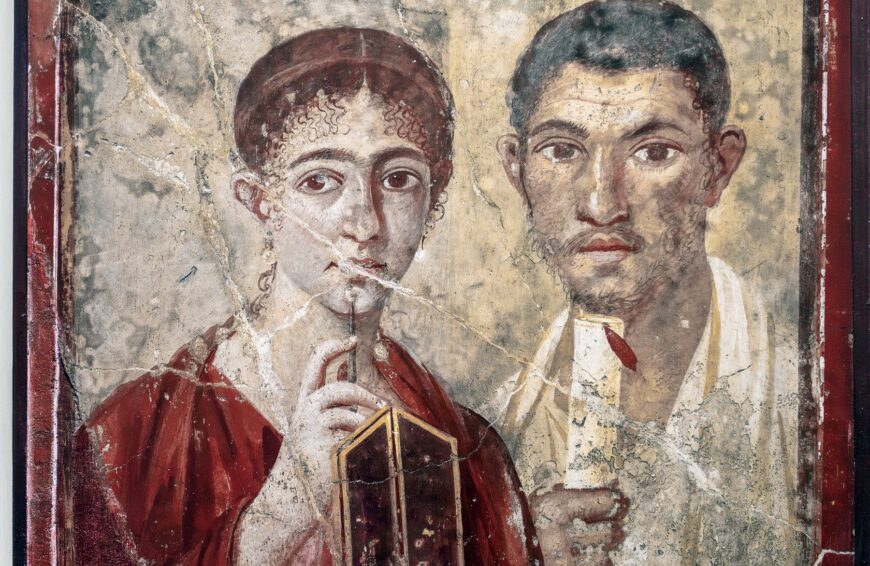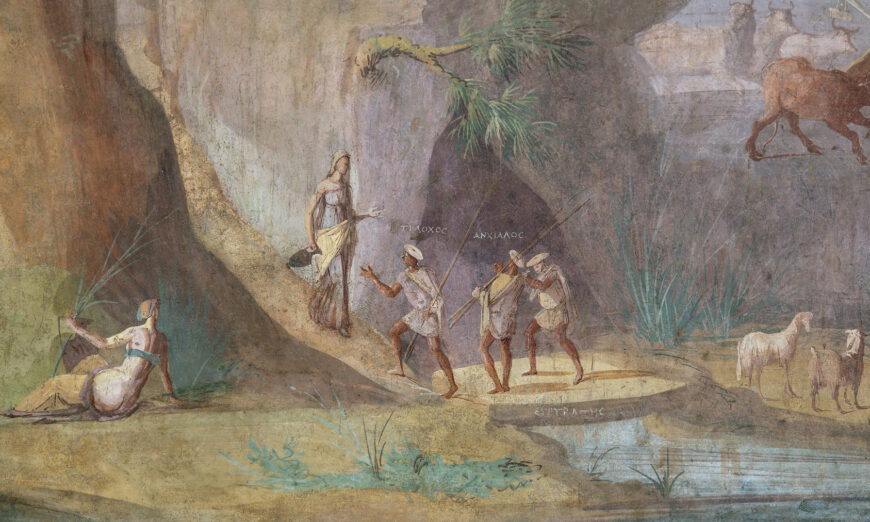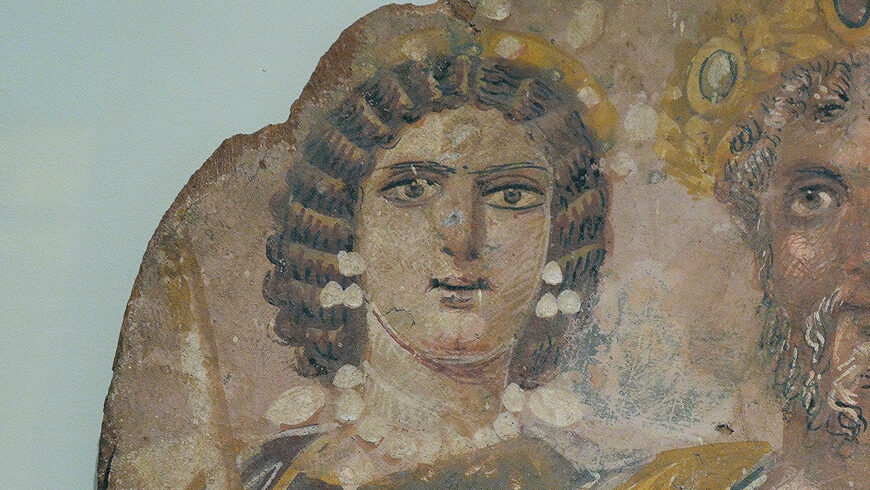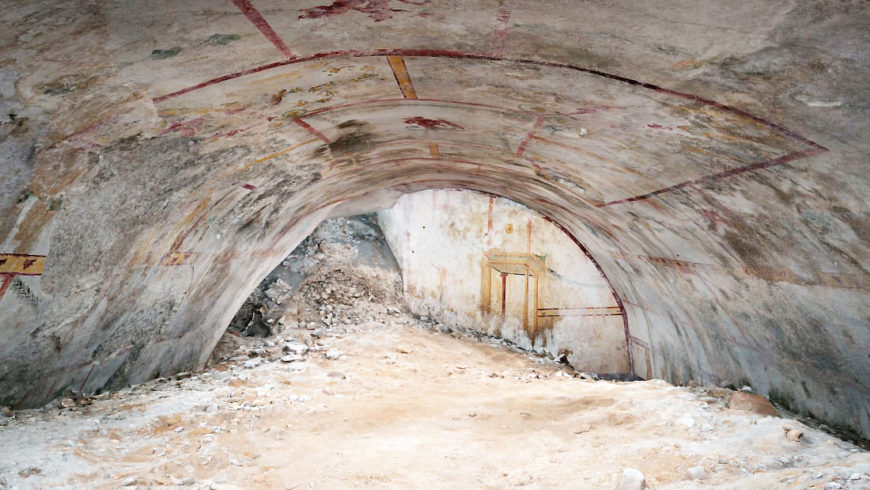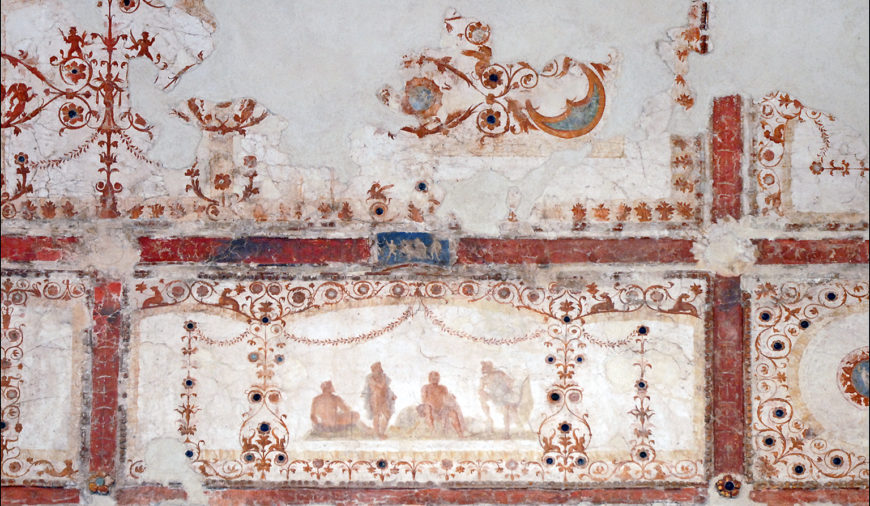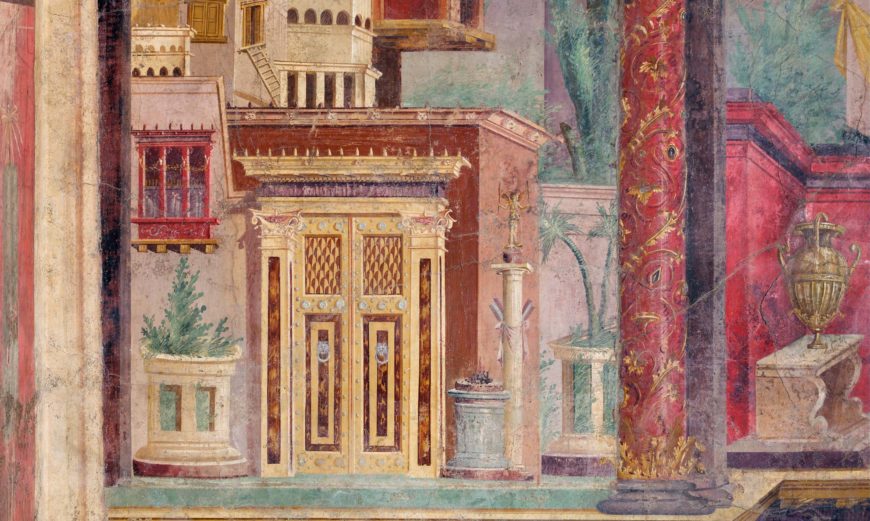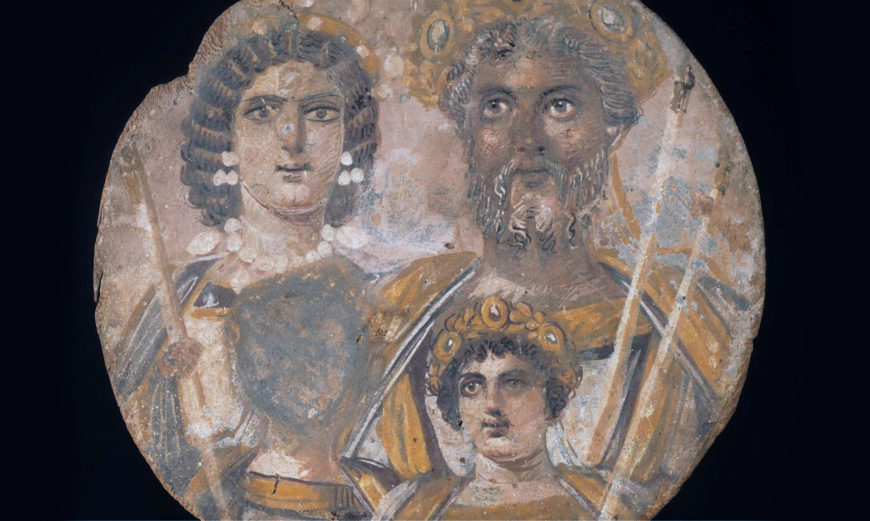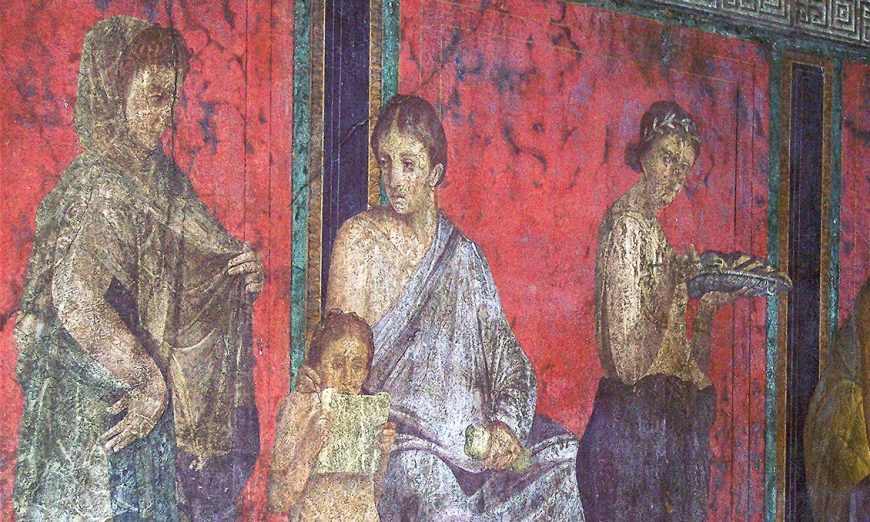Step into a stunning painted garden that gives insight into the flora and fauna of ancient Rome.
Painted Garden, Villa of Livia, fresco, 30-20 B.C.E. (Museo Nazionale Romano, Palazzo Massimo, Rome)
The plant species depicted include: umbrella pine, oak, red fir, quince, pomegranate, myrtle, oleander, date palm, strawberry, laurel, viburnum, holm oak, boxwood, cypress, ivy, acanthus, rose, poppy, chrysanthemum, chamomile, fern, violet, and iris.
[0:00] [music]
Dr. Steven Zucker: [0:05] It’s a hot day in Rome, but the ancient Romans had figured out how to stay cool.
Dr. Beth Harris: [0:11] They did. We’re in a room that reconstructs a room in the Villa of Livia. Livia was the wife of the emperor Augustus. It was a lovely summer house, a resort of sorts. In the villa, there was one room that was partially underground, dug into the rock.
Dr. Zucker: [0:28] Which meant it would stay much cooler in the summer.
Dr. Harris: [0:31] And you can really appreciate that today.
Dr. Zucker: [0:33] The sense of coolness would come not only from the actual temperature but also from the decoration.
Dr. Harris: [0:39] From the very cool colors that this room is painted in. What the artist did was paint an amazing illusion of a landscape, a garden, as though the walls were not walls at all but views out beyond a fence, beyond a wall, with trees and bushes and fruits and plants and birds.
Dr. Zucker: [1:01] It’s as if the walls have literally dissolved, and this is the great example of the Second Style of Roman wall painting.
Dr. Harris: [1:08] The First Style was characterized by an attempt to recreate in paint and stucco the marble walls that would have decorated Greek palaces.
Dr. Zucker: [1:20] A kind of faux marble, a kind of trompe l’oeil.
Dr. Harris: [1:23] Exactly. Now, here, instead of the illusion of marble, the artist has created an illusion of nature.
Dr. Zucker: [1:29] It’s nature that spreads out all around us. And it’s not a menacing nature. It’s a beautiful, cultivated nature. It’s full of playful birds. There’s fruit in the trees. There are blossoms everywhere.
Dr. Harris: [1:42] And there’s light. The artist has used atmospheric perspective so that the trees and the leaves that are closest to us are rendered more crisply than the vegetation in the background.
Dr. Zucker: [1:53] The only real architecture that’s represented is, as you mentioned, a straw fence, perhaps within something that looks a little bit more substantial in a kind of pink-gray. The artist has used that outer wall in order to create a subtle rendering of perspective. You can see that as the wall reaches out in a couple of places to enclose trees that are just at the border.
Dr. Harris: [2:15] We see poppies, and roses, and irises, and pomegranates and…
Dr. Zucker: [2:22] Quince.
Dr. Harris: [2:22] There’s a real sense of variety in the plants, in the flowers, in the fruit, in the types of birds that we see, in the positions of the birds, some with their wings stretched back, some sitting quietly, some in the sky. There’s a real search for the variety of nature.
[2:39] My favorite part is on this one tree that is framed by that pinkish-gray wall. The branches move in exactly the haphazard way that a tree grows. Then there are places where we see light on the leaves and branches and other places where the leaves are in shadow.
Dr. Zucker: [2:58] It seems as if, actually, there’s a breeze that’s come up, and it’s blown some of those leaves over so that we’re seeing the more silvery underside. Then we get the darker shadows of the tops of the leaves. There’s this real sense of the momentary, and of this being a breezy, beautiful day.
Dr. Harris: [3:13] Yeah, you can almost hear the leaves rustle in the wind.
Dr. Zucker: [3:17] I think my favorite plant is probably the acanthus that grows up around a pine on one of the short sides of the room. Probably the other element that I find most interesting is that, in this open-air space, there is, perched precariously on that outer wall, a birdcage.
[3:36] Now, throughout this entire room, there are paintings of birds that are free, and flying through the open sky. But here we have a bird in a cage. And it reminds me, as I stand in this room, that although these walls have dissolved, I’m still inside.
[3:51] [music]


